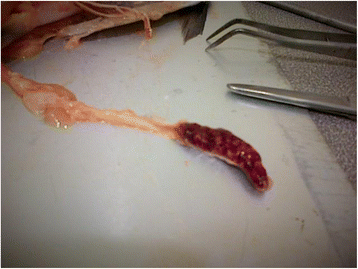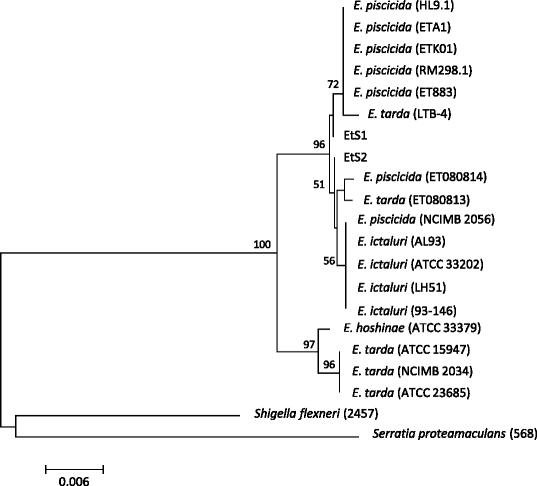First report of Edwardsiellosis in cage-cultured sharpsnout sea bream, Diplodus puntazzo from the Mediterranean
- PMID: 26193880
- PMCID: PMC4508803
- DOI: 10.1186/s12917-015-0482-x
First report of Edwardsiellosis in cage-cultured sharpsnout sea bream, Diplodus puntazzo from the Mediterranean
Abstract
Background: Edwardsiella tarda, is a serious bacterial pathogen affecting a broad range of aquaculture fish species. The bacterium has also been reported as a human pathogen, however recent studies have dissociated the fish pathogenic Edwardsiella from those isolated from humans by placing them in a new species, E. piscicida. Here we report the first case of Edwardsiellosis in cultured sharpsnout sea breams, Diplodus puntazzo in Greece.
Case presentation: The disease has affected cultured sharpsnout sea breams of a commercial fish farm in a single location in East Greece. Two populations of sharpsnout sea breams stocked in two consecutive years in floating cages presented signs of disease which included nodules and abscesses in spleen and kidney, morbidity and cumulative mortality reaching 5.3 %. Using microbiological, biochemical and molecular tools we have identified Edwardsiella sp. as the main aetiological factor of the disease. Following phylogenetic analysis the bacterial isolates are grouped with the newly described Edwardsiella piscicida species.
Conclusions: This is the first report of Edwardsiellosis in this species but most importantly in sea cage-cultured fish in the Mediterranean which may pose a serious threat for aquaculture fish species in this region.
Figures



References
-
- Xu T, Zhang X-H. Edwardsiella tarda: an intriguing problem in aquaculture. Aquaculture. 2014;431:129–35. doi: 10.1016/j.aquaculture.2013.12.001. - DOI
Publication types
MeSH terms
LinkOut - more resources
Full Text Sources
Other Literature Sources
Molecular Biology Databases

